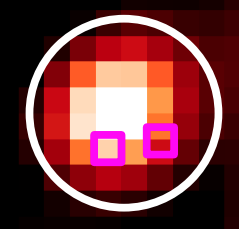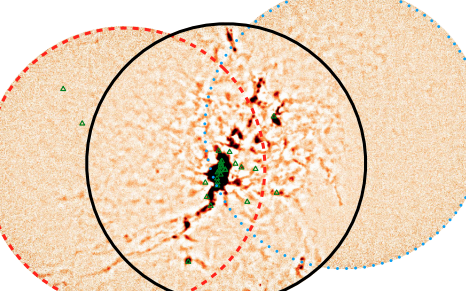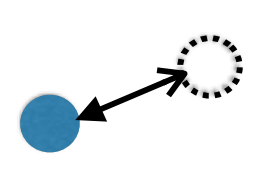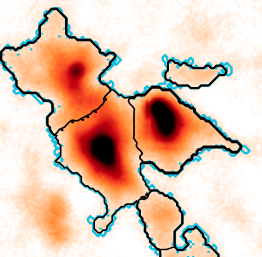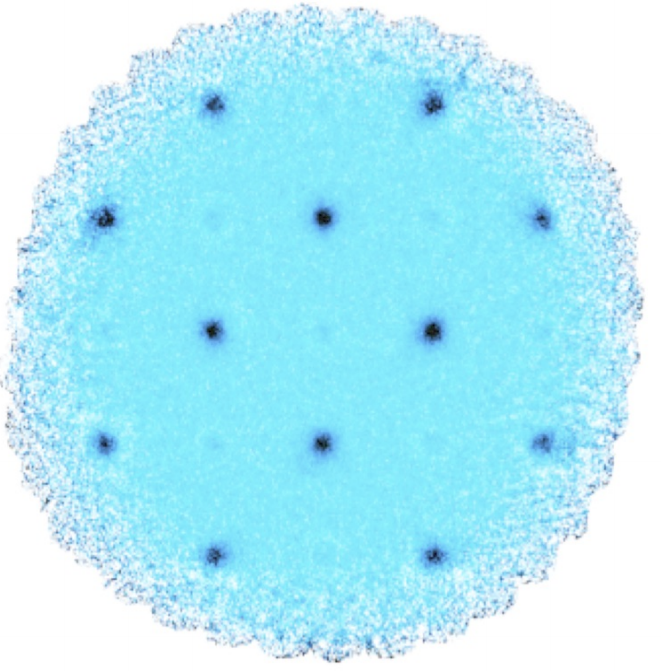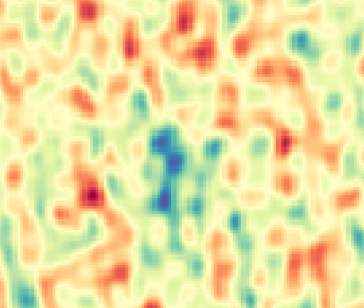The Dimming of Betelgeuse
In late 2019, Betelgeuse underwent an unprecedented dimming phase during which the V-band brightness of the red supergiant decreased by a factor of 3. In this study, we study 450 and 850 micron observations of Betelgeuse taken over the course of 12 years. At these wavelengths, we avoid the effects of extinction along the line of sight, providing an unbiased probe of the emission of the star and its environment. The derived submillimetre lightcurve also exhibits a dimming. Based on these data along with VLT imaging of the non-uniform brightness of the star, we report a significant reduction in the overall luminosity of the star during the time of the "great dimming", possibly due to the presence of large star spots. (Image Credit: MPIA Graphics)
General Information
Link to ADS
